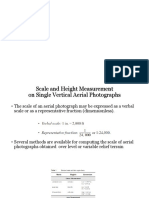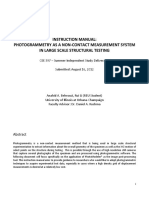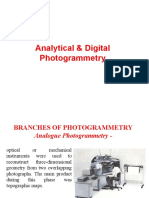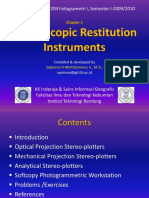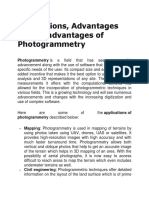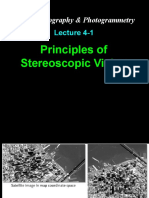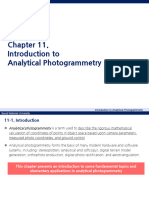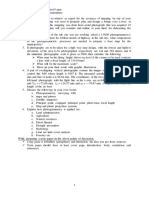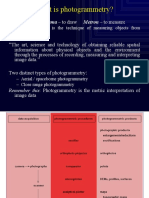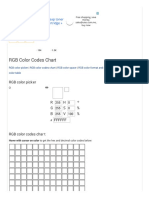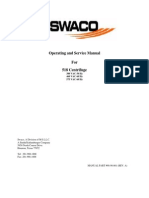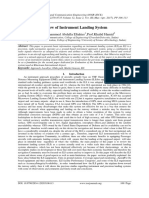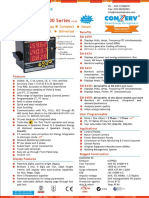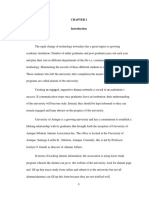0% found this document useful (0 votes)
214 views70 pagesClose Range Photogrammetry - Part1
This document outlines the topics to be covered in a course on close range photogrammetry. The syllabus includes cameras for close range photogrammetry, calibration of cameras, image coordinate measurement, adjustment of image triangulation, geometric and non-geometric factors, accuracy and reliability, 3D modeling and visualization, and applications in fields like civil engineering, architecture, archaeology, medicine, and police work. It also discusses recent developments in close range photogrammetry including automation, laser scanning, and future trends comparing photogrammetry to laser scanning.
Uploaded by
Eben EzerwyrantoCopyright
© © All Rights Reserved
We take content rights seriously. If you suspect this is your content, claim it here.
Available Formats
Download as PDF, TXT or read online on Scribd
0% found this document useful (0 votes)
214 views70 pagesClose Range Photogrammetry - Part1
This document outlines the topics to be covered in a course on close range photogrammetry. The syllabus includes cameras for close range photogrammetry, calibration of cameras, image coordinate measurement, adjustment of image triangulation, geometric and non-geometric factors, accuracy and reliability, 3D modeling and visualization, and applications in fields like civil engineering, architecture, archaeology, medicine, and police work. It also discusses recent developments in close range photogrammetry including automation, laser scanning, and future trends comparing photogrammetry to laser scanning.
Uploaded by
Eben EzerwyrantoCopyright
© © All Rights Reserved
We take content rights seriously. If you suspect this is your content, claim it here.
Available Formats
Download as PDF, TXT or read online on Scribd
/ 70
















